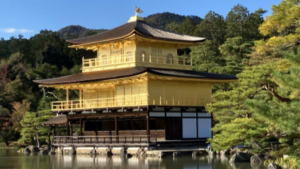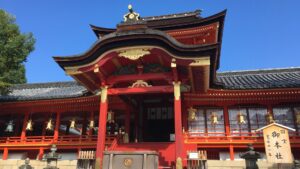The history of Ginkakuji Kyoto as a moon-viewing temple
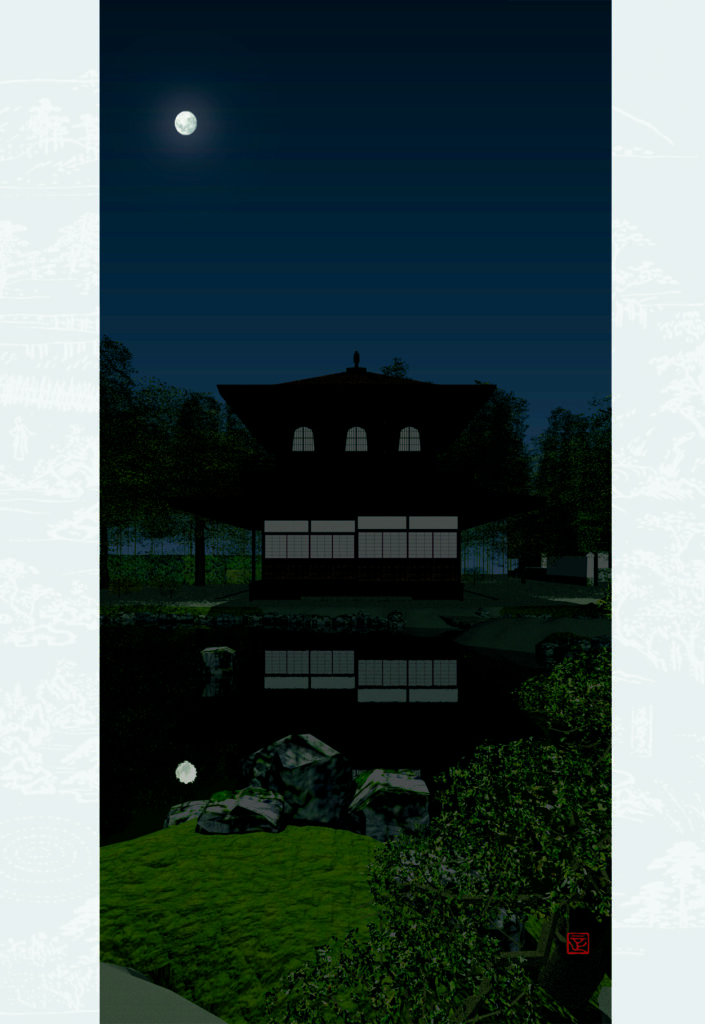
Ginkakuji Temple (Silver Pavilion), a World Heritage Site and a National Treasure is nestled amidst the serene Mt. Higashiyama, far from the bustling heart of Kyoto. Ashikaga Yoshimasa (1436-1490, 足利義政), the 8th Shogun of the Muromachi Shogunate (1336-1573), ordered its establishment during the latter years of his reign. Why did Yoshimasa enjoy the rising moon within the tranquil confines of his villa? Had he lived to witness the completion of the Silver Pavilion, he would have enjoyed seeing the rising moon from the ridge of Mt.Tsukimachi from the villa's first floor. The moon was reflected on the pond's surface and shined as well, which moved slowly on the circular stones arranged in the pond one by one. Ascending to the upper floor, Yoshimasa would have enjoyed the glittering Ginkakuji in the moonlight, with walls adorned with a luminous white clay infused with alum. In those moments, amidst the nocturnal darkness reminiscent of his tenure as Shogun, he might have glimpsed a light of hope, drawn from the tranquil moonlit ambiance. Despite his failures in politics as a Shogun during the 11 years-long Onin War, Yoshimasa played a pivotal role in shaping the Higashiyama artistic style, which embodies the essence of "Wabi and Sabi" - the beauty found in simplicity.
Yoshimasa's reign failed no matter what he did
Yoshimasa’s father, the 6th Shogun Yoshinori, ruled with an iron fist, implementing a harsh autocratic system known as "administration under Everyone’s fear”. However, in 1441, Yoshinori was unexpectedly assassinated at a banquet by his retainer, Akamatsu Mitsusuke, due to suspicions of imminent punishment. This unprecedented act brought Yoshimasa to inherit the Ashikaga lineage and became the 8th Shogun in 1449 upon reaching the age of 14.
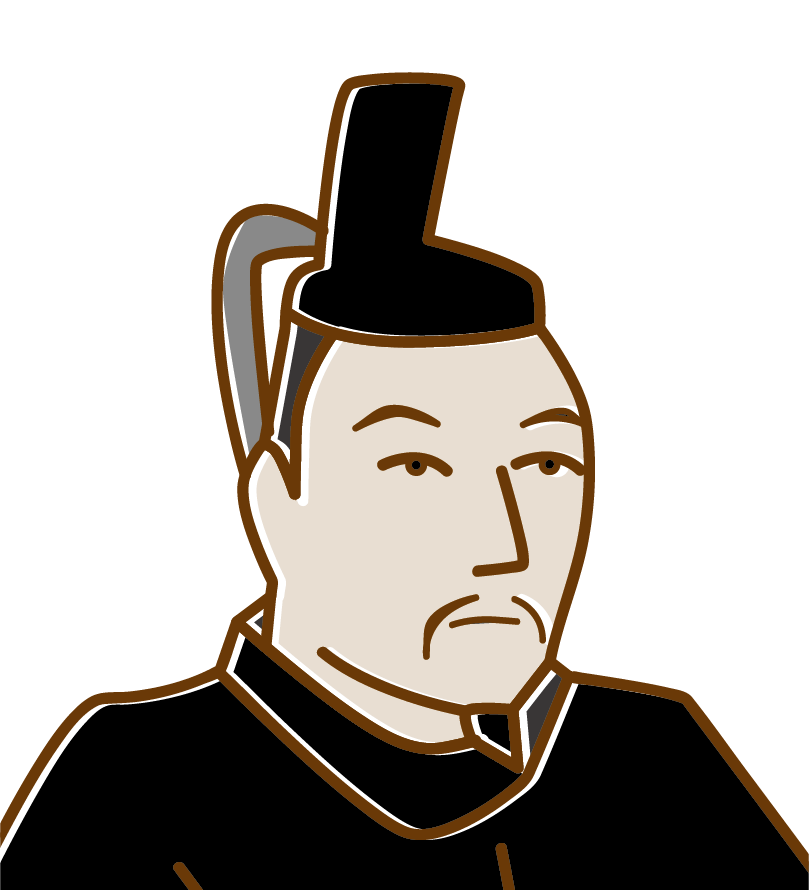
Despite his efforts to restore the policies of his respected grandfather Yoshimitsu’s measures and eliminate political conflicts among his retainers, Yoshimasa faced challenges as those around him prioritized their self-interests. Consequently, his attempts at effective governance faltered. With his dictatorial father no longer in control of the Shogunate, power struggles erupted frequently in various regions, accompanied by rebellions from the remnants of the Southern Court against the Shogunate. Furthermore, a devastating famine caused by drought and prolonged rainfall claimed the lives of over 80,000 people in Kyoto due to starvation. Despite the dire circumstances, many samurai indulged in luxury, while Yoshimasa devoted himself to the expansion and renovation of the Shogun’s residence, leading to a financial catastrophe. No measures were taken to alleviate the suffering and hunger of the people. The emperor also admonished Yoshimasa harshly. In a time of social turmoil that demanded strong leadership, Yoshimasa proved to be too weak.
The Onin War burned Kyoto to the ground, while Yoshimasa immersed himself in tasteful elegance
The Onin War erupted because of multiple succession disputes within the Shogun family and among various influential federal lords. Shortly after Yoshimasa designated his brother, Yoshimi, as the next Shogun, his wife, Tomiko, gave birth to the first heir. She sought to ensure her son’s ascension with the support of the Yamana clan, leading to a confrontation with his rival, the Hosokawa clan. The succession disputes of other prominent feudal clans divided the two sides of the Shogunate. In May 1467, fierce battles started in Kyoto, attracting warriors from all corners of Japan. The Western Camp, led by the Yamana clan, fielded 110,000 soldiers, while the Eastern Camp, led by the Hosokawa clan, amassed an army of 160,000 troops. As the conflict escalated, the emperor sought refuge in Yoshimasa’s residence, and the nobles fled to the countryside. Throughout the 11-year-long war, Kyoto was ravaged, with significant temples such as Shorenin, Daigoji, Nanzenji, Shokokuji, Tenryuji, and Kiyomizu falling victim to arson. Yoshimasa’s governance as Shogun lost its authority with power shifting towards a meritocracy among the federal lords.

(Source: Shinsho Gyokuraku-ji Temple / 『真如堂縁起絵巻』真正極楽寺蔵」)
Ginkakuji, an ideal mountain villa of Yoshimasa’s extraordinary passion
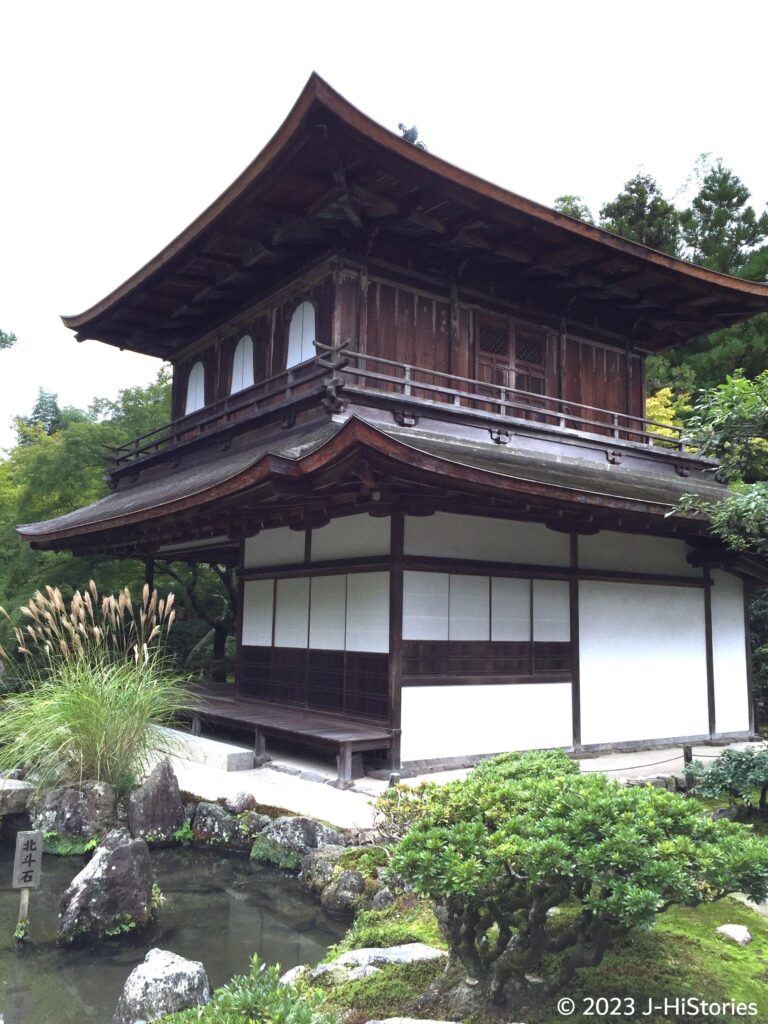
In 1482, Yoshimasa relinquished the position of Shogun to his son and embarked on constructing his villa surrounded by a profound silence far from Kyoto. For its construction, he visited several times and modeled after Saihoji Temple. He was also getting to devote himself to various artistic realms, including Waka (Japanese poetry), Renga (linked verse poetry), tea ceremonies, flower arrangements, and so on. Merely three years before his death, the Tōgudō was completed, featuring a four-and-a-half tatami mat room. Soft light permeated through the shoji screens while opening them revealing a garden that resembled a single painting. The Tōgudō is regarded as the origin of Japanese “Shointsukuri” architecture, reflecting an awareness of spatial connectivity. Its style significantly influenced the Japanese sense of beauty in subsequent generations. Yoshimasa passed away in 1490 at 55, before Kannondō (later known as Ginkaku) was completed.
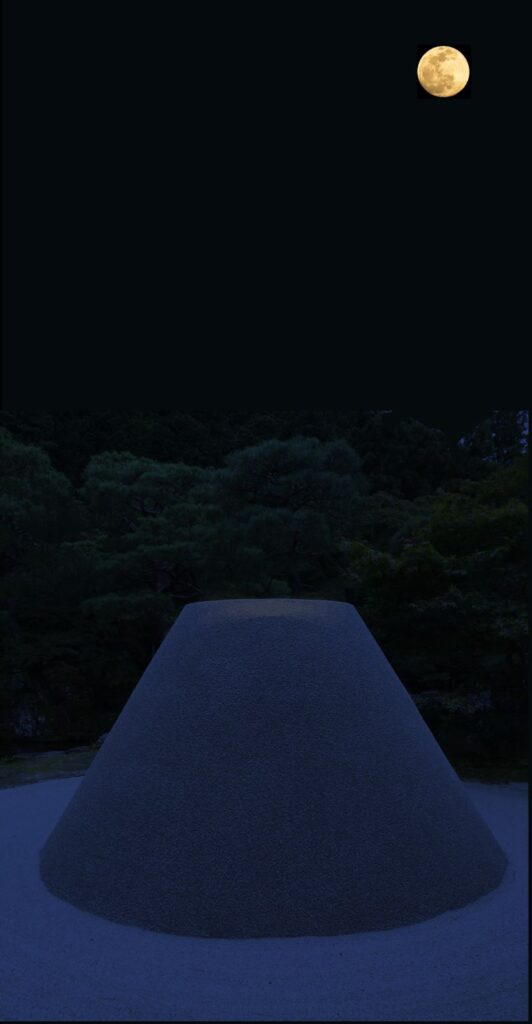
During the Edo period (1603-1868), the temple’s allure was further enhanced by incorporating two artificial white sand features, namely Ginshadan (resembling the wavy pattern of the silver sand sea) and Kōgetsudai (a distinctive mound shaped like Mt.Fuji), by honoring Yoshimasa’s love for the moon.
Moon-viewing temple, Ginkakuji
Ginkakuji shines within a tranquil atmosphere, encapsulating the essence of ethereal Japanese beauty on the moon night. Yoshimasa elevated the admiration for the moon into a realm of subtlety and profundity known as “Yugen”, immersing himself in the entire villa’s ethereal ambiance. As an unparalleled Shogun, he resurrected and laid the foundation of the Higashiyama culture, imbuing Japanese aesthetics with enduring beauty even in the aftermath of the destructive Onin War. One of his Waka expresses his spiritual state:
くやしくぞ 過ぎしうき世を 今日ぞ思ふ 心くまなき 月をながめて
I regret the past of my life, but I think, my heart is in a state of nothing, gazing at the moon.
Ashikaga Yoshimasa Timeline
| 1336 | Ashikaga Takauji established Muromachi Shogunate | - |
| 1392 | 3rd Shogun Ashikaga Yoshimitsu, Yoshimasa's grandfather, unified the Southern and Northern Courts | - |
| 1397 | Yoshimitsu constructed Golden Pavillion | - |
| 1408 | Yoshimitsu passed away | - |
| 1436 | Ashikaga Yoshimasa was born | Age=1 |
| 1441 | Ashikaga Yoshinori, Yoshimasa's father, was assassinated | 6 |
| 1449 | Yoshimasa became the 8th Shogun | 14 |
| 1464 | Yoshimasa appointed his brother to be the next Shogun | 29 |
| 1465 | Yoshimasa had his heir | 30 |
| 1467 | Onin War started (- 1477) | 32 |
| 1474 | Yoshimasa resigned from the shogun | 39 |
| 1477 | Onin war ended | 42 |
| 1483 | Yoshimasa moved to Ginkakuji under construction | 48 |
| 1490 | Yoshimasa passed away | 55 |
| 1573 | Muromachi Shogunate ended by Oda Nobunaga | - |
Recommendation to visit
Ginkakuji Temple (Siliver Pavillion)
- Access: 1 hour from Kyoto Station. Take bus #5 bound for "Ginkakuji-Iwakura(銀閣寺・岩倉)” at A1 or bus #17 bound for "Ginkakuji(銀閣寺) "at A2. Get off at "Ginkakuji-michi (銀閣寺道)" stop, then a 10-minute walk. Or Take the subway bound for "Kokuasai-kaikan (国際会館)" on the Karasuma line. Get off at Imadegawa station. Then take bus #203 at "Karasuma-Imadegawa (烏丸今出川)" stop bound for "Ginkakuji/Kinrin shako-mae (銀閣寺・錦林車庫前)". Get off at "Ginkakujimae (銀閣寺前)", then a few-minite walk.

